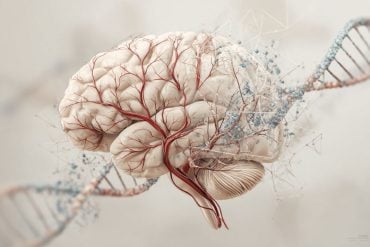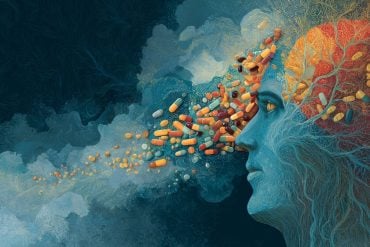Summary: New research confirms that the wrinkles on your fingers after water exposure always form in the same pattern. The consistency stems from the fixed position of blood vessels under the skin, which constrict after prolonged immersion, creating the familiar loops and ridges.
Researchers tested the same fingers across multiple immersions and found near-identical wrinkle topography each time. The findings could have forensic applications, including identification of bodies exposed to water and new approaches in biometric science.
Key Facts:
- Repeatable Patterns: Wrinkle topography stays consistent across water exposures.
- Vessel-Based Mechanism: Blood vessel constriction—not skin swelling—drives wrinkle formation.
- Forensic Potential: Findings could aid in identification after water-related deaths.
Source: Binghamton University
Do your wrinkles always form in the same pattern every time you’re in the water for too long?
According to new research from Binghamton University, State University of New York, the answer is yes.
A couple of years ago, Binghamton University Associate Professor Guy German published research about why human skin wrinkles when you stay in the water too long.

Received wisdom held that the water swelled your skin and made your fingers wrinkly, but little to no research had been done to prove that.
What German and his team at the Biological Soft Matter Mechanics Laboratory found is that blood vessels beneath the skin actually contract after prolonged immersion, and that’s where the wrinkles come from.
He wrote about the research for The Conversation — a nonprofit news organization that asks academics to share their expertise on current topics — as part of its Curious Kids feature. One of the follow-up questions stumped him, though.
“A student asked, ‘Yeah, but do the wrinkles always form in the same way?’ And I thought: I haven’t the foggiest clue!” said German, a faculty member at the Thomas J. Watson College of Engineering and Applied Science’s Department of Biomedical Engineering. “So it led to this research to find out.”
In a paper recently published in the Journal of the Mechanical Behavior of Biomedical Materials, German and Rachel Laytin ’23, MS ’24, show that, yes, the topography patterns remain constant after multiple immersions.
“Blood vessels don’t change their position much — they move around a bit, but in relation to other blood vessels, they’re pretty static,” German said. “That means the wrinkles should form in the same manner, and we proved that they do.”
The research put subjects’ fingers in water for 30 minutes, taking photos and then repeating the immersion under the same conditions at least 24 hours later. By comparing the images, German and Laytin found the same patterns of raised loops and ridges after both immersions.
They also made an interesting side discovery: “We’ve heard that wrinkles don’t form in people who have median nerve damage in their fingers,” German said.
“One of my students told us, ‘I’ve got median nerve damage in my fingers.’ So we tested him — no wrinkles!”
As much fun as it was to figure out something a child asked, the research also could have real-world applications in forensics, such as fingerprinting at crime scenes and identifying bodies found after prolonged water exposure. German’s father, a retired U.K. police officer, faced some of these challenges during his law enforcement career.
“Biometrics and fingerprints are built into my brain,” he said. “I always think about this sort of stuff, because it’s fascinating.”
German is eager to further explore questions about skin immersion with his students: “I feel like a kid in a candy store, because there’s so much science here that I don’t know.
“We thank the people at The Conversation and the wonderful question they asked us, because does it create cool new science.”
About this forensic neuroscience research news
Author: John Brhel
Source: Binghamton University
Contact: John Brhel – Binghamton University
Image: The image is credited to Brenderous
Original Research: Open access.
“On the repeatability of wrinkling topography patterns in the fingers of water immersed human skin” by Guy German et al. Journal of the Mechanical Behavior of Biomedical Materials
Abstract
On the repeatability of wrinkling topography patterns in the fingers of water immersed human skin
Finger wrinkling during and after water immersion, often called pruning, is an evolutionary mechanism that increases grip strength in water.
Previous studies have determined that water-induced finger wrinkles result from vasoconstriction, or the tightening of blood vessels below the skin’s surface.
However, no previous studies have characterized the morphology of topographical finger wrinkles.
We anticipate that vasoconstriction also governs the morphology of finger wrinkles formed.
Since these constricting blood vessels are stationary, we expect the pattern created by topographical wrinkles formed to remain constant over time.
To evaluate pattern repeatability, images of human fingertips at two separate time points are overlaid and compared visually to establish corresponding wrinkle pairs.
Wrinkle pairs are vectorized with orientation correlations evaluated quantitatively using normalized dot products, then compared against randomly oriented control vectors.
The results demonstrate a significant relationship between wrinkle orientation across both time points and thus reveal the consistency of wrinkle morphology over time.







